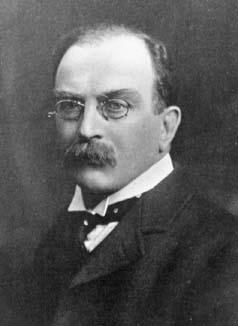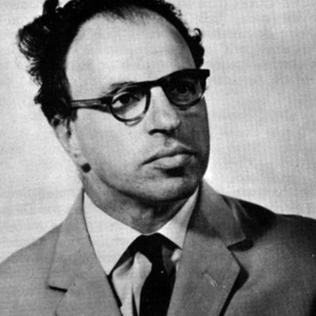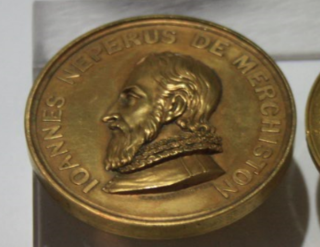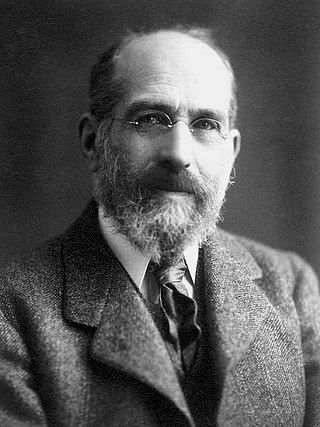Related Research Articles

Harold Scott MacDonald "Donald" Coxeter was a British-Canadian geometer and mathematician. He is regarded as one of the greatest geometers of the 20th century.

Sir Joseph Larmor was an Irish physicist and mathematician who made breakthroughs in the understanding of electricity, dynamics, thermodynamics, and the electron theory of matter. His most influential work was Aether and Matter, a theoretical physics book published in 1900.

Sir Hermann Bondi was an Austrian-British mathematician and cosmologist.

John Wishart was a Scottish mathematician and agricultural statistician.
The Wedderburn–Etherington numbers are an integer sequence named for Ivor Malcolm Haddon Etherington and Joseph Wedderburn that can be used to count certain kinds of binary trees. The first few numbers in the sequence are

Sir Edmund Taylor Whittaker was a British mathematician, physicist, and historian of science. Whittaker was a leading mathematical scholar of the early 20th century who contributed widely to applied mathematics and was renowned for his research in mathematical physics and numerical analysis, including the theory of special functions, along with his contributions to astronomy, celestial mechanics, the history of physics, and digital signal processing.
George Barker Jeffery FRS was a leading mathematical physicist in the early twentieth century. He is probably best known to the scientifically literate public as the translator of papers by Albert Einstein, Hendrik Lorentz, and other fathers of relativity theory.
Arthur Geoffrey Walker FRS FRSE was a British mathematician who made important contributions to physical cosmology. Although he was an accomplished geometer, he is best remembered today for two important contributions to general relativity, namely, the Robertson-Walker metric and the Fermi-Walker transport.

The Keith Medal was a prize awarded by the Royal Society of Edinburgh, Scotland's national academy, for a scientific paper published in the society's scientific journals, preference being given to a paper containing a discovery, either in mathematics or earth sciences.

Sir Franz Arthur Friedrich Schuster was a German-born British physicist known for his work in spectroscopy, electrochemistry, optics, X-radiography and the application of harmonic analysis to physics. Schuster's integral is named after him. He contributed to making the University of Manchester a centre for the study of physics.

Joseph Henry Maclagan Wedderburn FRSE FRS was a Scottish mathematician, who taught at Princeton University for most of his career. A significant algebraist, he proved that a finite division algebra is a field, and part of the Artin–Wedderburn theorem on simple algebras. He also worked on group theory and matrix algebra.

Duncan MacLaren Young Sommerville (1879–1934) was a Scottish mathematician and astronomer. He compiled a bibliography on non-Euclidean geometry and also wrote a leading textbook in that field. He also wrote Introduction to the Geometry of N Dimensions, advancing the study of polytopes. He was a co-founder and the first secretary of the New Zealand Astronomical Society.

Bhagvatsinhji was the ruling Maharaja of the princely state of Gondal from 1869 till his death in 1944, upon which he was honoured with 11-gun salute. He was the only Maharaja of Gujarat to take a medical degree and other degrees.
Ian Naismith Sneddon was a Scottish mathematician who worked on analysis and applied mathematics.

Ivor Robinson was a British-American mathematical physicist, born and educated in England, noted for his important contributions to the theory of relativity. He was a principal organizer of the Texas Symposium on Relativistic Astrophysics.

George Cunliffe McVittie (1904–1988) was a British mathematician and cosmologist. He is best known for his contributions towards radio astronomy.

William Gidley Emmett FRSE was a British industrial chemist, educationalist and academic author. In education he spoke out against traditional examination methods and developed a series of non-standard tests to assess IQ, now commonly appearing in standard IQ tests, and generally known as the Moray House Tests.
Prof Reinhold Heinrich (Henry) Furth was a German-speaking physicist born in Prague, noted for his 1951 BAAS lecture Physics and Social Equilibrium. He is also remembered for his 1934 theory that stars are composed of Antiparticles.
Prof Archibald James Macintyre HFRSE was a British-born mathematician.
Harold Stanley Ruse, MA, DSc, FRSE was an English mathematician, noteworthy for the development of the concept of locally harmonic spaces. He was Professor of Pure Mathematics at the University of Leeds.
References
- ↑ "Biography of I. M. H. Etherington" (PDF). Archived from the original (PDF) on 25 September 2006. Retrieved 31 March 2011.
- 1 2 "Archived copy" (PDF). Archived from the original (PDF) on 27 April 2016. Retrieved 18 April 2016.
{{cite web}}: CS1 maint: archived copy as title (link) - ↑ Etherington, I. M. H. (1932). "On relativistic cosmology and on the definition of distance in general relativity". Edinburgh Research Archive.
- ↑ Biographical Index of Former Fellows of the Royal Society of Edinburgh 1783–2002 (PDF). The Royal Society of Edinburgh. July 2006. ISBN 0-902-198-84-X. Archived from the original (PDF) on 24 January 2013. Retrieved 18 April 2016.
- ↑ Ivor Malcolm Haddon Etherington at the Mathematics Genealogy Project
- Krasiński, Andrzej (2007), "I. M. H. Etherington: a brief biography", General Relativity and Gravitation, 39 (7): 1053–1054, Bibcode:2007GReGr..39.1053K, doi:10.1007/s10714-006-0356-4, ISSN 0001-7701, MR 2322616, S2CID 121853990